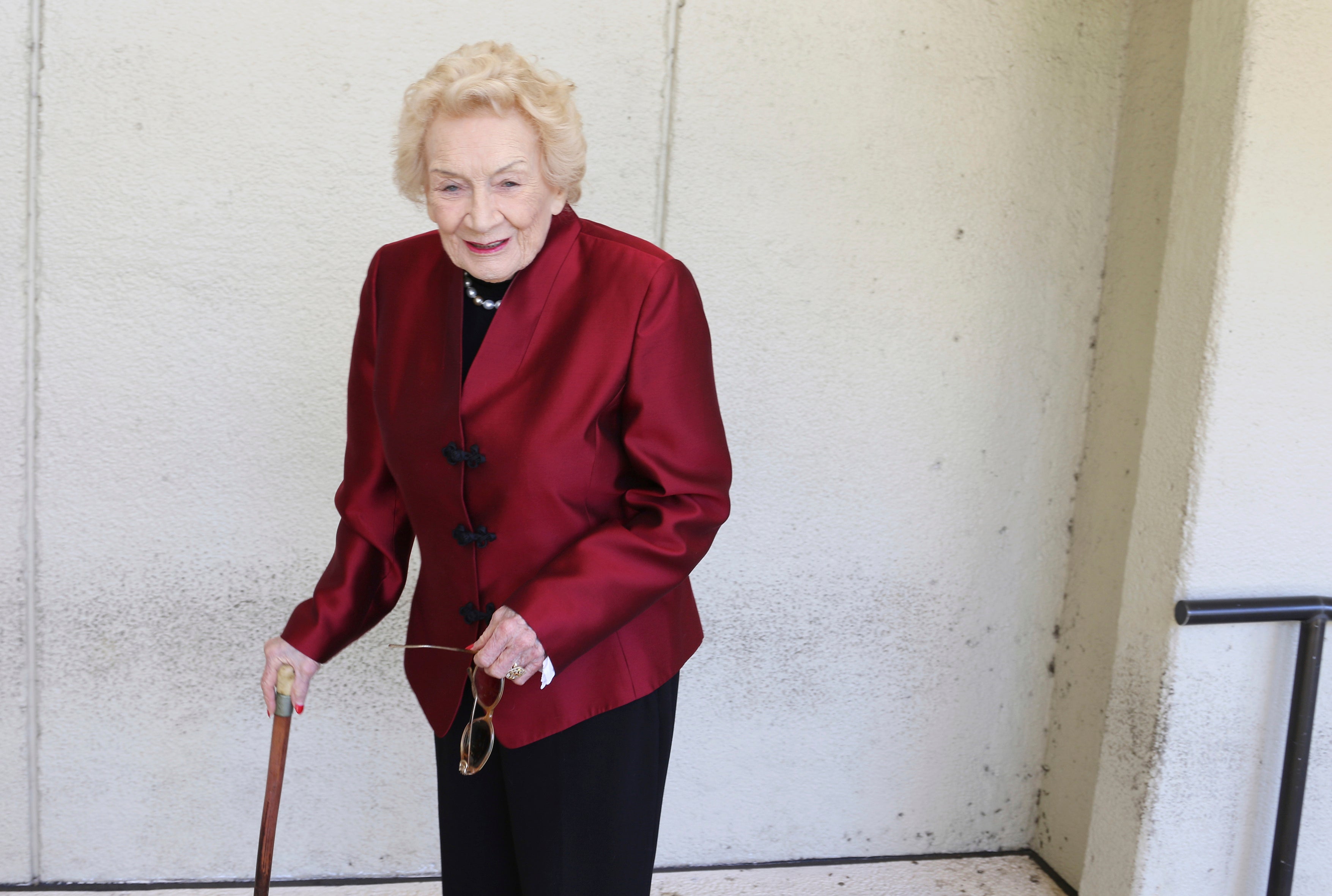‘Last Hawaiian princess’ to be buried after public viewing of casket held at palace
Casket bearing the 96-year-old heiress long considered the last Hawaiian princess is on public display in the Honolulu palace

Your support helps us to tell the story
From reproductive rights to climate change to Big Tech, The Independent is on the ground when the story is developing. Whether it's investigating the financials of Elon Musk's pro-Trump PAC or producing our latest documentary, 'The A Word', which shines a light on the American women fighting for reproductive rights, we know how important it is to parse out the facts from the messaging.
At such a critical moment in US history, we need reporters on the ground. Your donation allows us to keep sending journalists to speak to both sides of the story.
The Independent is trusted by Americans across the entire political spectrum. And unlike many other quality news outlets, we choose not to lock Americans out of our reporting and analysis with paywalls. We believe quality journalism should be available to everyone, paid for by those who can afford it.
Your support makes all the difference.The casket bearing the 96-year-old heiress long considered the last Hawaiian princess is set to go on public display in the downtown Honolulu palace that benefited from her wealth.
Abigail Kinoiki Kekaulike Kawānanakoa's casket, handcrafted from a 165-year-old koa tree that fell during a 2021 storm on the Big Island, was scheduled to arrive at ʻIolani Palace in a hearse on Sunday and be carried by members of a law enforcement honoir guard up the palace's front stairs and into the throne room.
The palace is America’s only royal residence, where the Hawaiian monarchy dwelled, but now serves mostly as a museum. Kawānanakoa was the palace’s largest single benefactor, according to her publicists, and even paid its electricity bills for many years.
Members of the public were allowed to line up to view her casket and weren't required to wear the shoe coverings that palace visitors normally have to wear as a preservation precaution. A carpet for mourners to walk on was temporarily installed for the viewing, which was scheduled to end at 8pm.
Kawānanakoa diedat her home in Nuuanu, near downtown Honolulu on 11 December. She died “peacefully” with her wife, Veronica Gail Kawānanakoa, 70, at her side, according to a news release.
“Abigail will be remembered for her love of Hawaii and its people,” her wife said in the release, “and I will miss her with all of my heart.”
Kawānanakoa held no formal title but was considered a princess because her lineage included the royal family that once ruled the Hawaiian islands. She was a reminder of Hawaii’s monarchy and a symbol of its national identity that endured after the kingdom was overthrown by American businessmen in 1893.
In 1895, an unsuccessful attempt by Hawaiian royalists to restore Queen Liliʻuokalani to power resulted in her arrest. She was put on trial before a military tribunal in her own throne room. After she was convicted, she was imprisoned in an upstairs bedroom of the palace for nearly eight months.
Kawānanakoa inherited her wealth from her great-grandfather, Irish businessman James Campbell, who made his fortune as a sugar plantation owner and one of Hawaii’s largest landowners.
He had married Abigail Kuaihelani Maipinepine Bright. Their daughter, Abigail Wahiika‘ahu‘ula Campbell, married Prince David Kawānanakoa, who was named an heir to the throne. Their daughter then went on to give birth to Abigail.
After the prince died, his widow adopted their grandchild, Abigail, which strengthened her claim to a princess title.
She inherited more money from Campbell than anyone else and amassed a trust valued at about $215m.
In 2017, a court battle began over control of her trust after she suffered a stroke. In 2018, Kawānanakoa attempted to amend her trust to ensure that her wife would receive $40m and all her personal property, according to court records.
Three years later, a judge ruled that Kawānanakoa was unable to manage her property and business affairs because she was impaired.
Kawānanakoa gained notoriety when she sat on an ʻIolani Palace throne for a Life magazine photo shoot in 1998, during which she damaged some of its fragile threads.
The uproar led to her ousting as president of Friends of ʻIolani Palace, a position she held for more than 25 years.
In addition to the palace's upkeep, Kawānanakoa funded various causes over the years, including scholarships for Native Hawaiian students, opposition to Honolulu’s rail transit project and protests against a giant telescope. She also donated items owned by King Kalākaua and Queen Kapiʻolani for public display, including a 14-carat diamond from the king’s pinky ring.
On Friday, Gov Josh Green ordered that US and Hawaii state flags be flown at half-staff at the state Capitol and state offices through sundown Monday for her funeral services.
A private funeral service is scheduled for Monday at Mauna ʻAla, also known as Royal Mausoleum State Monument, which is the burial place of Hawaiian royalty.

